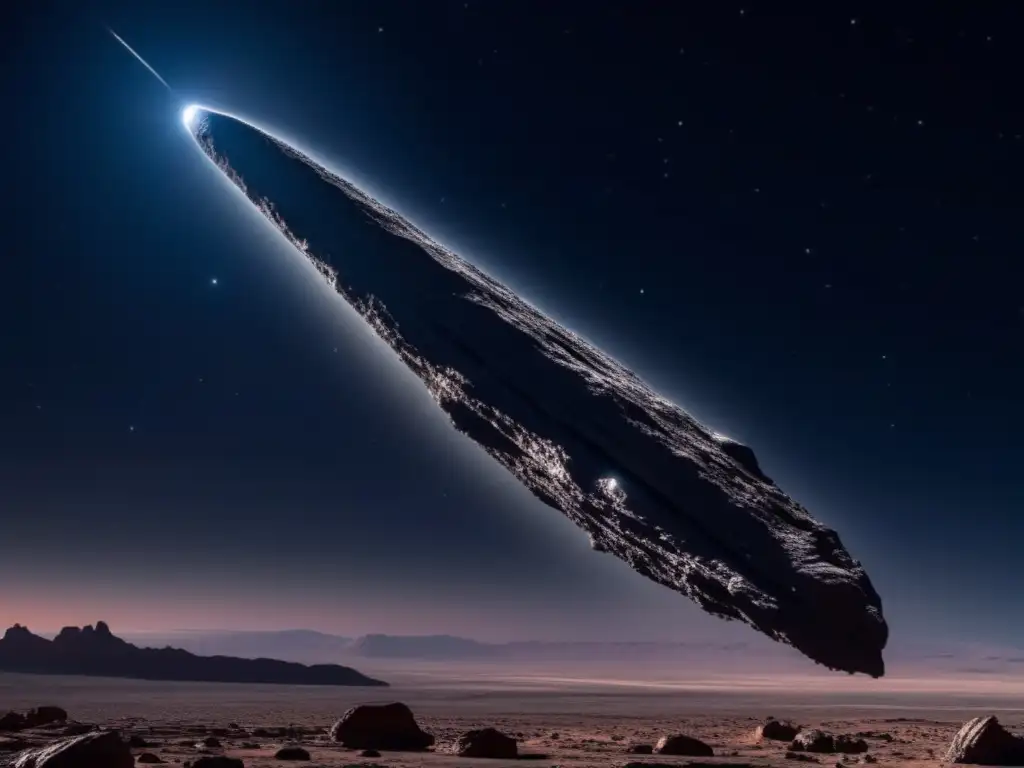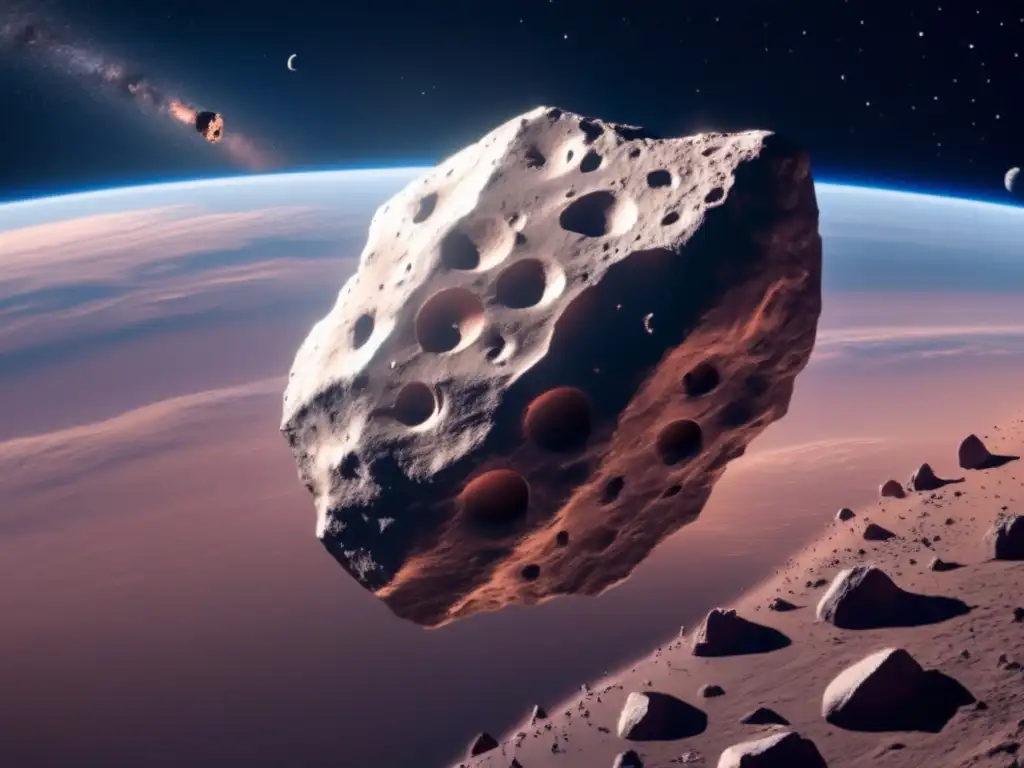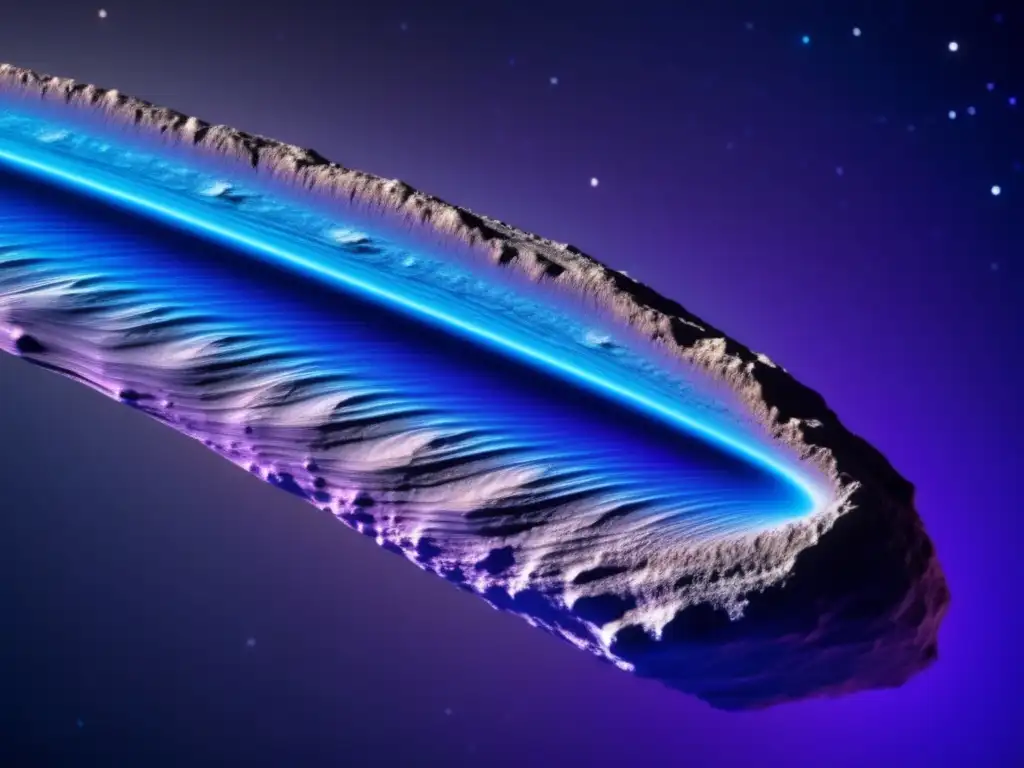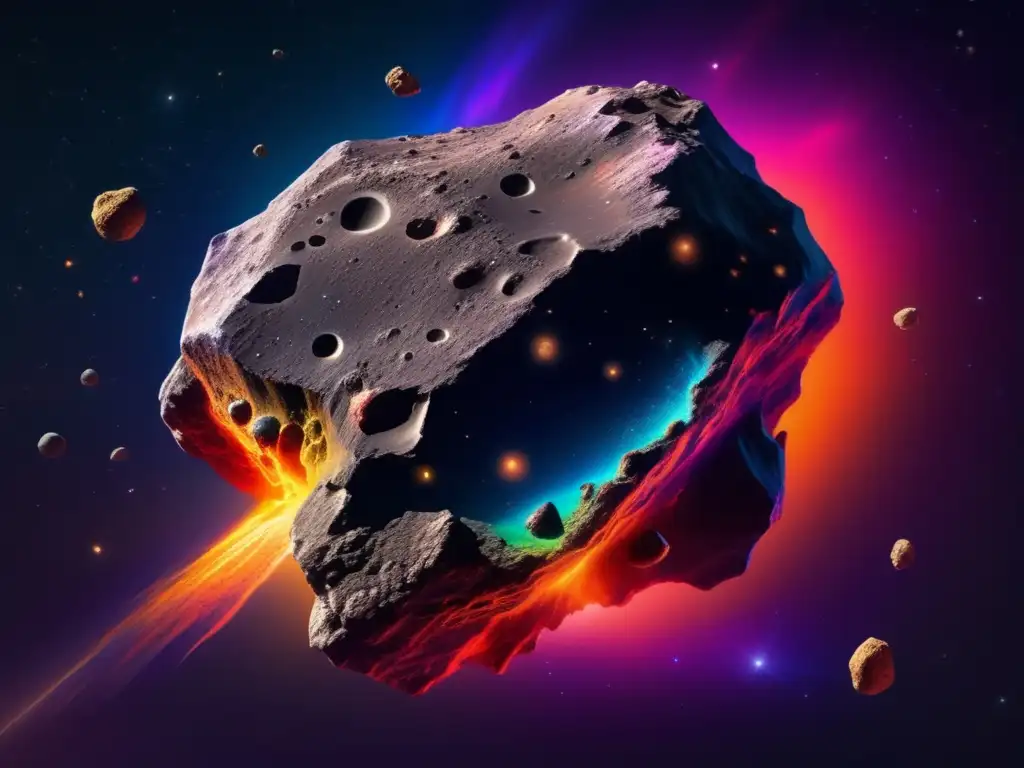The Discovery Of 'Oumuamua And Borisov: Interstellar Asteroids

Introduction
In 2017 and 2019, astronomers discovered two interstellar objects passing through our solar system. These objects, named 'Oumuamua and Borisov respectively, caused great excitement in the scientific community and sparked a renewed interest in the study of interstellar asteroids. In this article, we will explore the discovery of these two objects and what we can learn from them about the nature of asteroids and their potential role in the universe.
The Discovery of 'Oumuamua

The First Interstellar Object
In October 2017, astronomers using the Pan-STARRS1 telescope in Hawaii discovered an unusual object passing through our solar system. This object, named 'Oumuamua (which means "scout" or "messenger" in Hawaiian), was initially thought to be a comet, but further observations showed that it lacked the typical coma and tail associated with comets.
Characteristics of 'Oumuamua
'Oumuamua is an elongated, cigar-shaped object, approximately 800 meters long and 80 meters wide. It is tumbling through space and appears to be made up of metal-rich rock. Its reddish hue indicates that it has been exposed to cosmic radiation for millions or billions of years.
Theories About 'Oumuamua
The origin and nature of 'Oumuamua are still a matter of debate among scientists. Some have suggested that it may be a fragment from a larger object that was ejected from a distant star system, while others have proposed that it could be an artificial object, like a probe sent by an extraterrestrial civilization.
The Discovery of Borisov

The Second Interstellar Object
In August 2019, amateur astronomer Gennady Borisov discovered a second interstellar object passing through our solar system. This object, now known as Borisov, is a comet-like object with a blueish hue and a visible coma and tail.
Characteristics of Borisov
Borisov appears to be similar in composition to comets in our own solar system. Its coma and tail indicate that it is releasing gas and dust as it approaches the sun. The object is estimated to be about 1 kilometer in diameter and is traveling at a speed of over 175,000 kilometers per hour.
Studying Borisov's Composition
Scientists are eager to study Borisov's composition in order to learn more about the conditions in other star systems. By analyzing the gases and dust released by the comet, they hope to gain insight into the chemical and physical processes that occur in these distant regions of the universe.
The Significance of Interstellar Asteroids

The Implications for Planetary Formation
Interstellar asteroids like 'Oumuamua and Borisov offer valuable insights into the formation of planets and other bodies in our own solar system. By studying their composition and trajectory, scientists can gain a better understanding of the chemical and physical processes that occur during planetary formation.
Potential for Interstellar Travel
The discovery of interstellar objects like 'Oumuamua and Borisov also raises questions about the potential for interstellar travel. If it is possible for asteroids and other objects to travel between star systems, could humans one day do the same?
Search for Extraterrestrial Life
The discovery of interstellar objects also has implications for the search for extraterrestrial life. By studying the composition of these objects, scientists hope to gain insight into the conditions necessary for life to form and thrive in other star systems.
Frequently Asked Questions

-
What is an interstellar asteroid?
An interstellar asteroid is an asteroid that originates outside our solar system and enters our solar system as a result of gravitational interactions with other stars.
-
How common are interstellar asteroids?
Interstellar asteroids are thought to be relatively rare, but the discovery of 'Oumuamua and Borisov suggests that they may be more common than previously believed.
-
What can we learn from studying interstellar asteroids?
Studying interstellar asteroids can provide valuable insight into the formation of planets and other bodies in our own solar system, as well as the potential for interstellar travel and the search for extraterrestrial life.
-
Could interstellar asteroids pose a threat to Earth?
While the likelihood of an interstellar asteroid colliding with Earth is low, it is not impossible. However, scientists are constantly monitoring the skies for potential threats and developing strategies to mitigate any potential impact.
-
Will we discover more interstellar asteroids in the future?
As astronomers continue to search the skies, it is likely that more interstellar objects will be discovered in the future. These discoveries will provide valuable insights into the nature of asteroids and their role in the universe.
Conclusion
The discovery of 'Oumuamua and Borisov has sparked a renewed interest in the study of interstellar asteroids and the potential implications they hold for our understanding of the universe. These objects offer valuable insights into the formation of planets and other bodies, the potential for interstellar travel, and the search for extraterrestrial life. As scientists continue to monitor the skies, we can expect to learn even more about these fascinating objects in the years to come.
Thank you for reading this article on Asteroid Realm. We hope you found it informative and engaging. Please share your thoughts and comments below and consider subscribing to our website for more exciting content about asteroids and their role in the universe.
Additional Resources

For further reading on interstellar asteroids and related topics, check out these resources:
- NASA Study on Massive Asteroid Deflection Mission Concept
- 'Oumuamua: Interstellar Asteroid or Alien Probe?
- Interstellar Object 'Oumuamua Is Almost Certainly a Comet, Scientists Say
 Unraveling 10115 1992 SK: The Least Eccentric Asteroid
Unraveling 10115 1992 SK: The Least Eccentric Asteroid 2013 MZ5: A Milestone In Asteroid Discoveries
2013 MZ5: A Milestone In Asteroid Discoveries The Exciting Discovery Of 2004 FH: A Record Close Approach
The Exciting Discovery Of 2004 FH: A Record Close ApproachIf you want to discover more articles similar to The Discovery Of 'Oumuamua And Borisov: Interstellar Asteroids, you can visit the Asteroid Discoveries category.
Leave a Reply

Articulos relacionados: